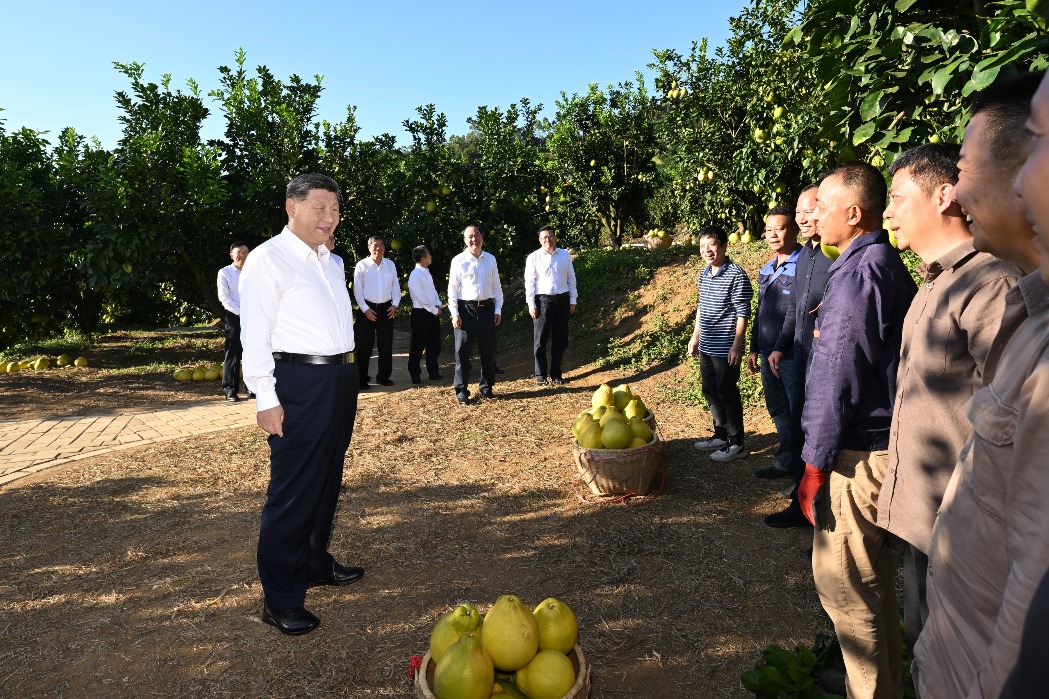New starting point for Xinjiang’s modernization journey in the new era: China Daily editorial

The grand gathering to celebrate the 70th anniversary of the founding of the Xinjiang Uygur autonomous region in Urumqi, the regional capital, on Thursday was more than just a local affair. In recalling how a hinterland region has been transformed into a vibrant regional economy exemplifying all-round development, it also conveyed a broader national significance.
Abject rural poverty, a long-term challenge in Xinjiang's remote rural areas, has been eradicated. New infrastructure links villages to markets and cities to trade corridors, as well as the region to neighboring countries. Emerging industries — from renewable energy to modern agriculture — have begun to reshape Xinjiang's economy, bringing tangible benefits to local residents.
All this has been achieved under the leadership of the Communist Party of China. Xinjiang's governance has been defined by the Party's comprehensive guidelines that emphasize stability, rule of law, ethnic unity, cultural enrichment and sustainable development. The region's steady development in the new era reflects the institutional strengths of the socialist system with Chinese characteristics and the effectiveness of the policies tailored to the region.
These have enabled Xinjiang to navigate multiple challenges while also achieving substantial progress, particularly since 2012. These achievements made under the Party's guidelines for governing Xinjiang in the new era have not just improved people's livelihoods; they have also bolstered a sense of confidence and belonging among the region's people of all ethnic groups. This harmony in diversity was fully displayed at the grand gathering in Urumqi.
Ethnic unity is the bedrock for the stability and prosperity of Xinjiang. Yet Xinjiang's significance extends beyond its internal cohesion. Strategically located at the crossroads of Central Asia, the region is an essential hub for the Belt and Road Initiative. Its highways, railways and pipelines link China with Central Asia, the Middle East and Europe. That gives Xinjiang dual importance as both a domestic development priority and a global gateway.
The white paper on Xinjiang's governance released last week provides a clear articulation of the long-term vision. It lays out a framework for a united and harmonious, prosperous and modern, culturally confident, ecologically sustainable and secure Xinjiang.
Xinjiang's stability and development clearly show how a multiethnic border region can be transformed into a model of modernization as long as an appropriate governance system is in place. The region's progress over the past 70 years indicates that the Party's approach to governing Xinjiang has helped establish such a governance system that is effective in meeting the region's practical needs. This is not merely about short-term economic growth; it is about institutionalizing a system of governance that can sustain progress for decades to come.
The tone in Xinjiang is one of confidence. The message should be clear to all: Seventy years after its founding, the autonomous region has reached a new starting point. It is no longer a border region defined by remoteness or hardship. The next stage of its journey has begun.
The anniversary celebrations were not only a commemoration of what has been achieved — they were also a declaration of intent, a statement that Xinjiang's future lies in deeper integration with the rest of the country and the world.
For China, Xinjiang is more than a regional success story. It is a demonstration of how the nation envisions modernization: rooted in stability, enriched by cultural diversity, and guided by a long-term vision of unity and prosperity. That is why the 70th anniversary commemorations matter — not just as a look back at history, but as a marker of the road ahead. Xinjiang has now joined the rest of the country in embarking on the new journey of building a modern socialist country in all respects.

































